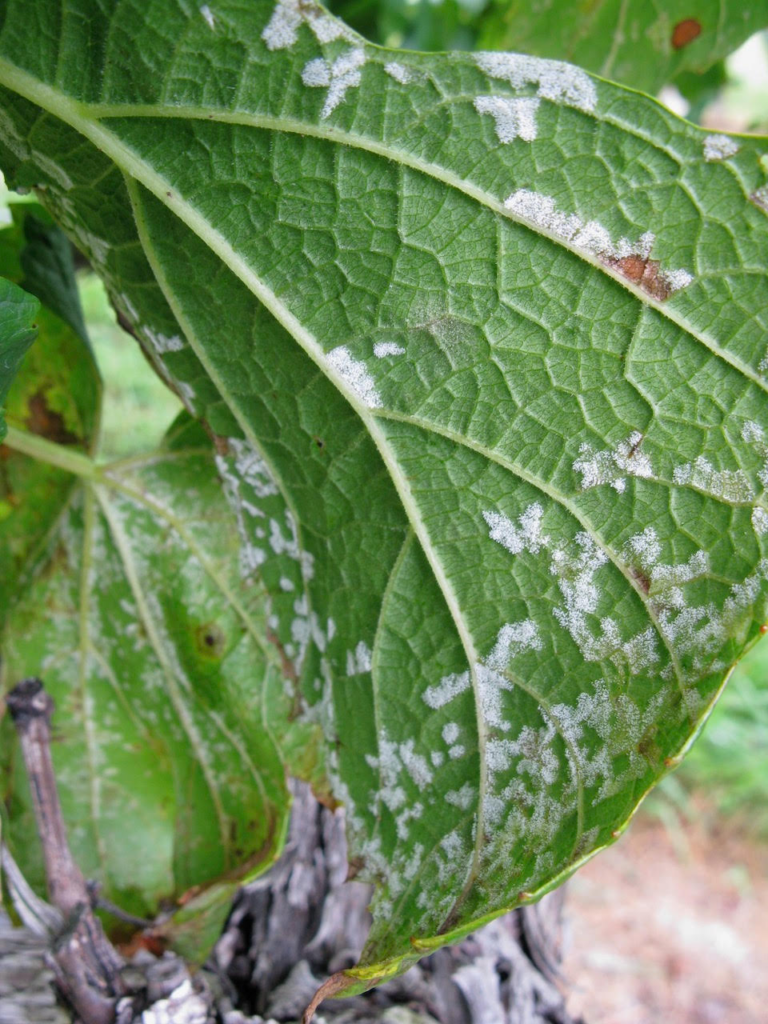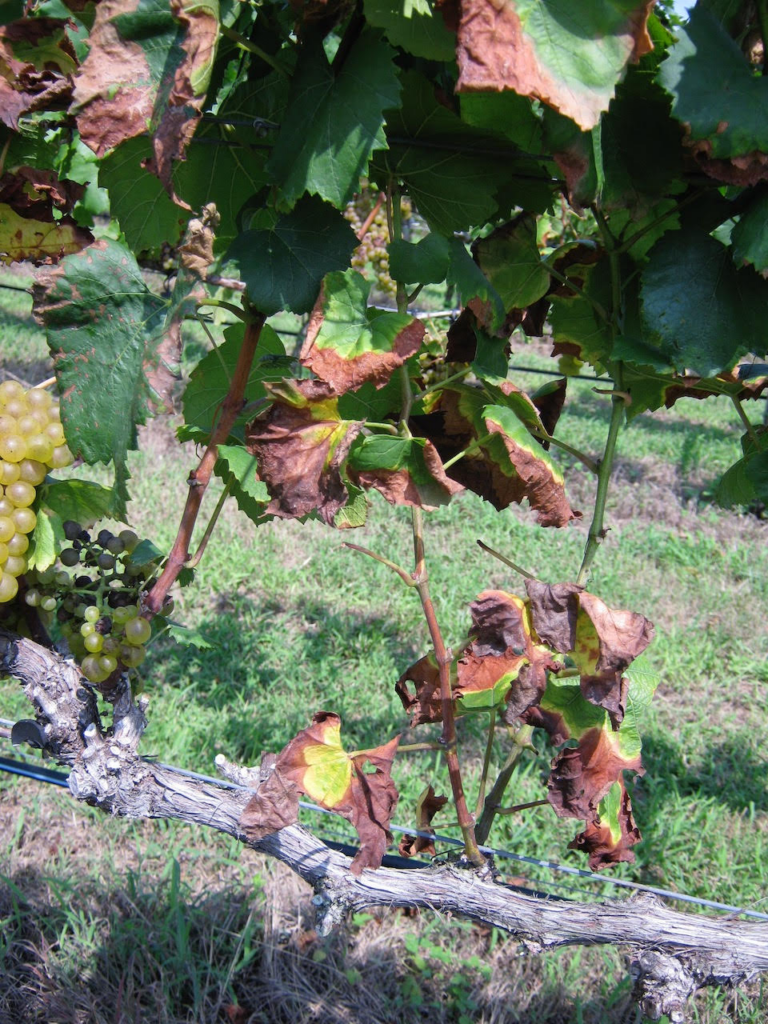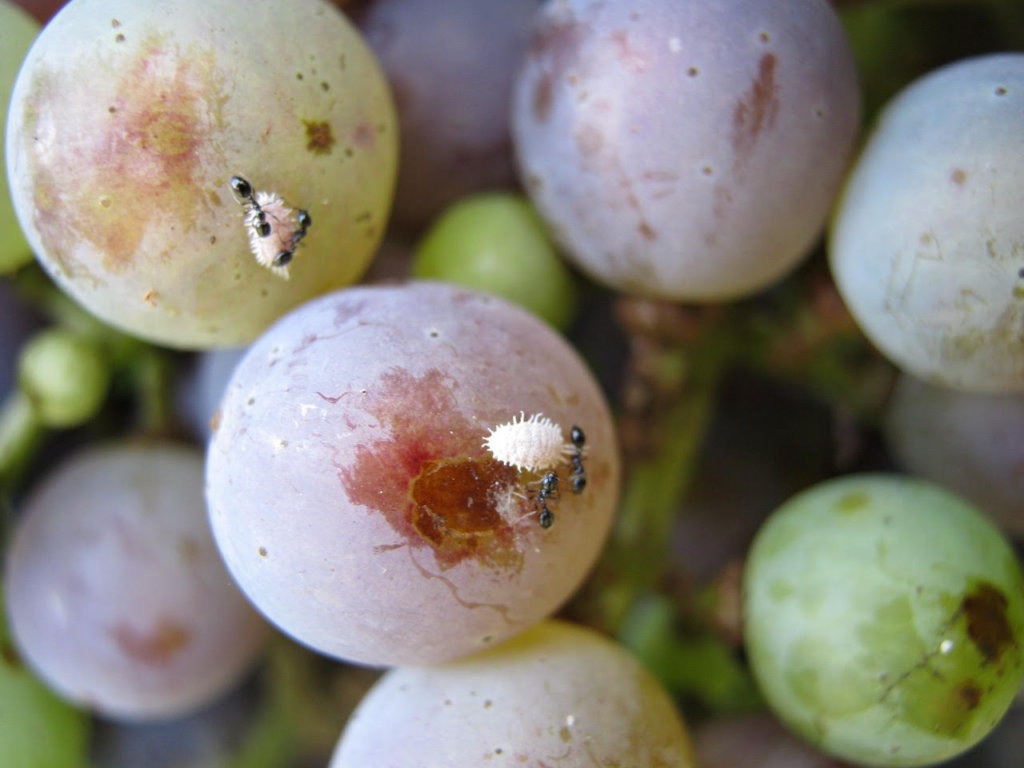Written By Dr. Nita, Edited by Jess Trapeni
The 2024 season began similarly to 2023, with a relatively warm winter. As a result, the vines grew faster than usual, leading to bud breaks occurring 2-3 weeks earlier than in recent years. For example, in Northern Virginia, bud break happened in early April instead of mid-April. Fortunately, most locations did not suffer from damage due to late frost. From May to July, the weather was extremely dry, but some precipitation was observed in late August, September, and October. Specifically, Southwestern Virginia received more rain than other regions.

The warm winters and dry summer conditions contributed to the development of Pierce’s Disease symptoms, even in regions where these symptoms are usually not observed. Throughout the season, we received several reports from Central and Northern Virginia, with some indicating they noticed more cases in 2024 than in 2023. It is important to note that the disease pathogen was widely observed across the Commonwealth.
In a random sample survey conducted in 2013, we found an over 80% positive rate in Southern Virginia, as expected. As we moved north, the rate decreased; however, even in Northern Virginia, the rate was over 33%, despite symptoms being rarely seen.

An increased occurrence of powdery mildew has been noted. This disease can spread and infect plants without the need for rain. The dry weather likely led to more lax spray schedules, which allowed powdery mildew to thrive. If you often struggle with chronic powdery mildew, particularly on clusters, we recommend using newer SDHI (FRAC group 7) products in combination with sulfur (FRAC = M1). Combination materials (e.g., FRAC 7 + 3) work very well too. Apply them 7 to 10 days before bloom, which is about 7 days earlier than our usual recommendation
I also heard about grapevine leafroll disease, which is caused by several species of grapevine leafroll-associated viruses. The drier environment contributes to outbreaks of this disease, as the vectors—mealybugs and scale insects—thrive in such conditions. Additionally, some individuals mentioned that they tried field grafting. However, unless you test the vines for viruses, field grafting (or any type of grafting) increases the risk of propagating virus-infected grapevines.

On the other hand, people reported a decrease in downy mildew, which is heavily dependent on rain for infection. However, to our surprise, we still observed a notable amount of downy mildew throughout Virginia, indicating a substantial inoculum build-up from previous years. Additionally, some cases were a result of late-season rains.
While I cannot predict the future, a disease outbreak in one year can often carry over to the next, primarily because more inoculum will be present in your vineyard. Therefore, it’s important to monitor the situation closely, especially if you experienced difficulties in 2024. Hopefully, the cold winter we are having will reduce the risk of Pierce’s Disease.
